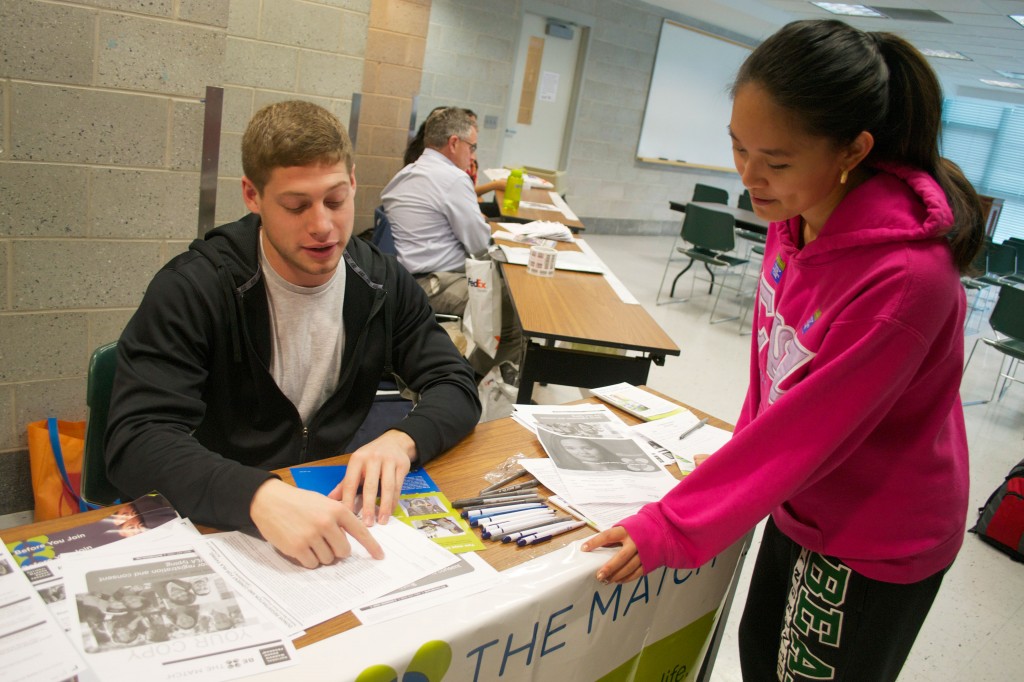
Although there are dozens of blood drives on campus each year, nearly 18,000 patients in the U.S. also need stem cells from bone marrow, a tissue that produces billions of red blood cells. Last Wednesday, students had a chance to help.
In the New University Union, the Pre-Medical Association and Sigma Psi Zeta hosted a bone marrow registry on campus. Organizers entered participants into the Be the Match National Bone Marrow Donor Program by taking a cotton swab cheek sample. The program saves the information and alerts people who match a patient who needs a stem cell transplant, and offers them the opportunity to donate.
Approximately 70 different diseases, including leukemia and sickle-cell anemia, can be treated by transplants of bone marrow stem cells, which help strengthen their immune system.
Megan Go, president of the Pre-Medical Association and a senior double-majoring in neuroscience and biochemistry, said that there are many different drives on campus, but her organization wanted to address a cause that needs more exposure.
“The idea that you can potentially save someone’s life is a very big deal, and something that I think students should reach out to do,” Go said.
Jordan Randall, event coordinator of the Pre-Medical Association and a senior majoring in biology, said it is important to educate students on what a transplant involves. And since the process is non-binding, it is painless and helpful to get involved.
“I think it’s good to sign up; if you’re contacted as a match that’s where you can decide ‘Do I want to try and help someone?’ or ‘Maybe I don’t think that this is the right thing for me,’” Randall said.
According to Senior Community Engagement Representative Michael Garbin, Be the Match is the nation’s largest bone marrow donating registry and finds approximately 6,500 matches annually. There are about 13 million people currently in the system. Potential donors are removed from the list when they turn 61 years old, as stem cells become less effective with age.
“Our goal is for every patient to have at least one match, which is not the case today,” Garbin said. “If you’re called to donate, that means you’re the best hope to save another person’s life, so without your donation then possibly, that person would not have a chance to survive.”
Bone marrow donors may experience headaches, nausea or bone pain after the procedure, but the symptoms usually fade quickly according to the Mayo Clinic.
Garbin said that the best part of the donation process was that Be the Match arranges for the donor to meet their match one year after the transplant so they can see the change they’ve made in the patient’s life.
Throughout the three-hour event, 19 people registered and took a 10-minute cheek swab which added their tissue information to the registry.
Marvin Sukhhiran, a junior majoring in human development, said that if he were a match, he would choose to donate.
“I saw these flyers around the building and it just looked like a great opportunity for me to contribute back to the community,” Sukhhiran said. “That’s the main reason we’re here: to save someone else’s life.”


